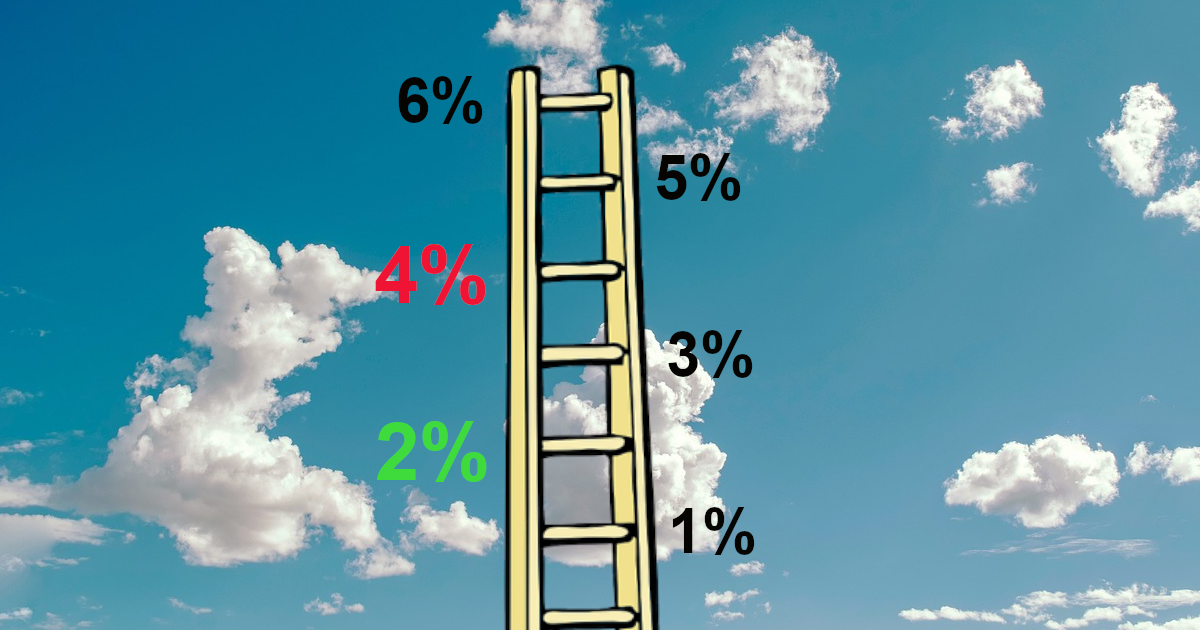

Sticky Core:
Inflation Still Too High
Historical Campaign...
In an historical hiking cycle, the Federal Reserve has raised interest rates by more than 5 percentage points in just a little over a year in response to blistering post-pandemic inflation. As consumers were released from pandemic lockdowns, a tidal wave of spending paired with tattered supply chains and a labor market strained by worker shortages, prices began spiraling upward. Initially, the Fed was reluctant to raise rates, assuming that prices would cool as supply chains mended. When supply chain bottlenecks persisted for longer than expected, and prices continued to soar, the Fed embarked on a perhaps once-in-a-lifetime hiking campaign. First, they made 25 basis point (-0.25%) hikes before progressing to 50 points, and then 75 points in an aggressive battle with rising prices.
Making Headway
Definite progress has been made against inflation. The two primary inflation gauges, CPI and PCE, have dropped sharply from the peaks. CPI readings peaked in June of last year at an eye-watering annual rate of 9.1%. Since then, the CPI level has fallen to 3.2%, a drop of 5.9%. PCE, the Fed’s preferred measure, also peaked in June of 2022 at a rate of 6.8%. The most recent PCE reading was 3.3%, 3.5% lower than its highest reading of 6.8% in summer of 2022. Clearly, price pressures have subsided as supply chains have begun to heal.
Sticky Core
However, despite the noticeable dips in overall inflation, so-called core inflation has been much more stubborn. Core inflation, which removes the volatile prices of food and energy, has not fallen as much as the overall, headline measures. Core CPI peaked in October of 2022 at 6.6%, with the latest reading for August coming in at 4.7%. That makes up only a 1.9% dip from core CPI’s highest level. Core PCE reached its highest level in February of 2022 at 5.3%. Since then, it has fallen to 4.2%, a drop of just 1.1%.
Cut Timing…
With the core reading of the Federal Reserve’s preferred inflation measure having only fallen 1%, and inflation levels still far above the Fed’s target of 2%, it may prompt the Fed to maintain elevated interest rates. Currently, based on Fed funds futures, markets largely expect the Fed may be done hiking, or at a minimum are nearly done. Now, markets may be pivoting from focusing on how much rates will be raised to when rate cuts will be made. Bad news appears to still be good news, with upbeat economic data increasing chances of the Fed making another hike or keeping rates higher for longer. Stocks rose last week after the 'JOLTS' measure of job openings dipped to its lowest since March 2021. Though signs of a cooling economy have appeared, the labor market and consumer spending remain remarkably resilient, keeping hopes alive for a soft-landing scenario of defeating inflation without tipping into a recession.
September 6, 2023
Markets Demystified is published the first and third Wednesdays of each month, and explores how stock market investing can relate to personal finance.
Thanks for reading!
Aesop Advisor LLC advertisements including newsletters and other publications are for informational purposes only. They do not attempt to predict future stock market moves and are not intended as individual investment advice. Aesop Advisor LLC newsletters and publications are not recommendations to buy, sell or hold any asset and are not intended as actionable investment advice or market timing. Equities references generally refer to the overall stock market, though if individual companies are mentioned, it is not a recommendation to buy, sell, or hold shares of the company. Unless otherwise indicated, terms including "stocks", the "stock market", and "market(s)" refer to Standard & Poor's 500 index. All investments involve risk and the past performance of a security or financial product does not guarantee future results or returns. While diversification may help spread risk, it does not assure a profit or protect against loss. There is always the potential of losing money when you invest in securities or other financial products. Publications and advertisements from Aesop Advisor LLC are not intended as investment, legal, or tax advice. Although gathered from sources believed to be reliable, Aesop Advisor LLC cannot guarantee the accuracy and completeness of data or information presented in publications and advertisements. This is an advertisement.